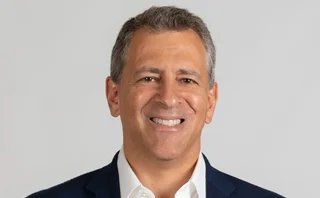
Commodities research house of the year: Macquarie Bank
Energy Risk Awards 2019: Breadth and depth of coverage produces granular and unique insights

In an era of ubiquitous data, artificial intelligence and machine learning, there is still no substitute for shoe leather – or at least a frequent-flyer number – and human interaction. “I spend more than a hundred days a year on the road,” says Vikas Dwivedi, Houston-based head of global energy strategy at Macquarie Group, winner of this year’s Energy Risk research house of the year award.
“There’s only so much modelling you can do. Only talking to humans can give you the kind of insights you need.”
Dwivedi’s team regularly sits down with traders and analysts from a diverse group that includes oil producers, refiners, commodity traders, hedge funds and equity investors that Dwivedi counts as clients for his team’s research.
“You need access to the reality of how the supply chain works,” he argues. So when you see some odd local price action … more often than not, we can provide some real granular colour on what is happening.”
Dwivedi leads a team of six analysts in Houston producing commodities research while, globally, a further nine senior analysts, supported by an additional nine associates, publish energy sector equities research. They are supported by 15 desk analysts, who specialise in particular regions or products, such as jet fuel and naphtha.
“It would surprise me if any other [sell-side] institution has a bench like that,” says Dwivedi.
The intellectual capacity that Macquarie can draw upon allows the bank to look into some of the more complex and under-researched aspects of the energy market. Dwivedi cites two reports published earlier this year, which analysed what the shift of the US oil and gas market from Cushing to Houston is likely to mean for the WTI-Brent spread – what he describes as “the most watched and least researched spread in the oil market”.
There’s only so much modelling you can do. Only talking to humans can give you the kind of insights you need
Vikas Dwivedi, Macquarie Group
Limited available infrastructure in Houston, and local challenges involved in adding to it, means “the next big congestion area in the United States is going to be in Houston … right in the middle of the Gulf Coast,” says Dwivedi. “The world’s largest oil market is going to get swamped out with too much oil – there will be a lot of ripple effects.”
The team is also using the latest technology to enhance its research, such as tapping satellite imagery. “That area is still in development. You can’t necessarily draw very strong conclusions or use it as the basis for hard analysis, but it’s very informative: it can give us a lean,” says Dwivedi.
As an example, he cites last summer, when his team was negative on the outlook for crude oil. “The price kept rallying from July until early October. We were the only shop we knew that stayed bearish and, frankly, it got very painful,” says Dwivedi.
However, the physical flows that his team was tracking suggested the market was not nearly as tight as the price rally suggested.
“The satellite data wasn’t showing big inventory draws at the global level … so we stayed bearish. When it turned, it was catastrophic – a lot of investors and traders blew up. What enabled us to stick to our call was our analysis of the physical flows. If we were just using spreadsheets, we would likely have decided we were wrong. We’ve had a lot of occasions like that, where our ability to stay with the fundamentals has helped us.”
Increasingly, however, it’s not just physical fundamentals that dictate where the market is headed. “We endeavour to never be caught by surprise by a new piece of data, but sometimes we’re wrong, and the market rallies when it should be falling. Often it’s related to machine and algorithmic trading. Systematic trend-following capital flows are massive.”
Dwivedi notes that commodity index products – strategies that enable investors to gain specific types of commodity exposures, based on variants of well-known indexes such as the Bloomberg Commodity Index series – can push significant volumes of capital in and out of energy markets. The amount invested in these products has risen from around $5 billion in 2015 to $125 billion currently, says Dwivedi. Macquarie’s research into the impact of these products, “has improved our understanding of non-fundamental inputs into the price of oil and gas”.
Only users who have a paid subscription or are part of a corporate subscription are able to print or copy content.
To access these options, along with all other subscription benefits, please contact info@risk.net or view our subscription options here: http://subscriptions.risk.net/subscribe
You are currently unable to print this content. Please contact info@risk.net to find out more.
You are currently unable to copy this content. Please contact info@risk.net to find out more.
Copyright Infopro Digital Limited. All rights reserved.
As outlined in our terms and conditions, https://www.infopro-digital.com/terms-and-conditions/subscriptions/ (point 2.4), printing is limited to a single copy.
If you would like to purchase additional rights please email info@risk.net
Copyright Infopro Digital Limited. All rights reserved.
You may share this content using our article tools. As outlined in our terms and conditions, https://www.infopro-digital.com/terms-and-conditions/subscriptions/ (clause 2.4), an Authorised User may only make one copy of the materials for their own personal use. You must also comply with the restrictions in clause 2.5.
If you would like to purchase additional rights please email info@risk.net
More on Commodities
Energy Risk Asia Awards 2025: The winners
Winning firms showcase the value of prudent risk management amid challenging market conditions
Data and analytics firm of the year: LSEG Data & Analytics
Energy Risk Awards 2025: Firm’s vast datasets and unique analytics deliver actionable insights into energy transition trends
OTC trading platform of the year: AEGIS Markets
Energy Risk Awards 2025: Hedging platform enhances offering to support traders and dealers in unpredictable times
Electricity house of the year: Natixis CIB
Energy Risk Awards 2025: Bank launches raft of innovative deals across entire electricity supply chain
Voluntary carbon markets house of the year: SCB Environmental Markets
Energy Risk Awards 2025: Environmental specialist amplifies its commitment to the VCM
Sustainable fuels house of the year: Anew Climate
Energy Risk awards 2025: Environmental firm guides clients through regulatory flux
Weather house of the year: Parameter Climate
Energy Risk Awards 2025: Advisory firm takes unique approach to scale weather derivatives markets
Hedging advisory firm of the year: AEGIS Hedging
Energy Risk Awards 2025: Advisory firm’s advanced tech offers clients enhanced clarity in volatile times







